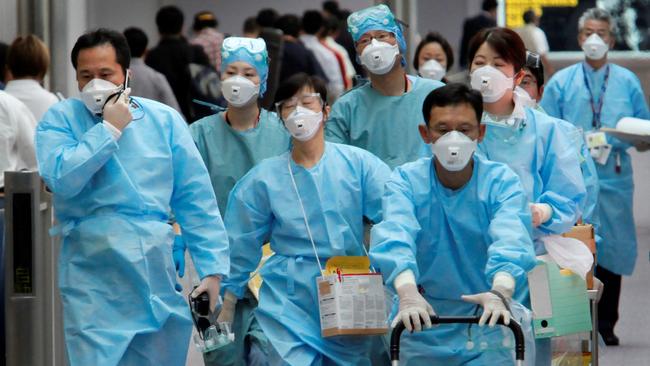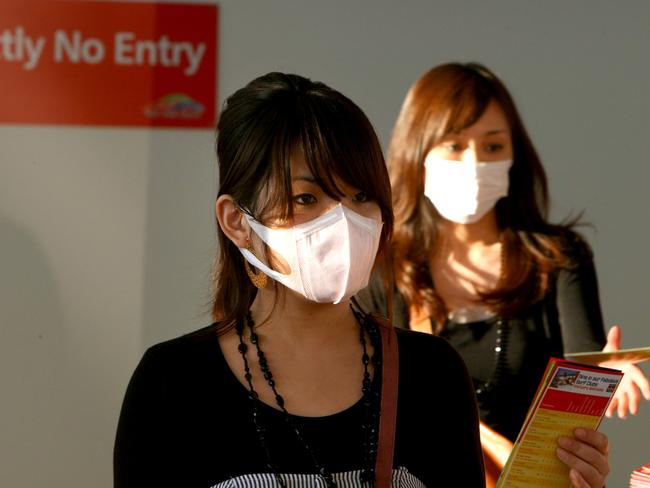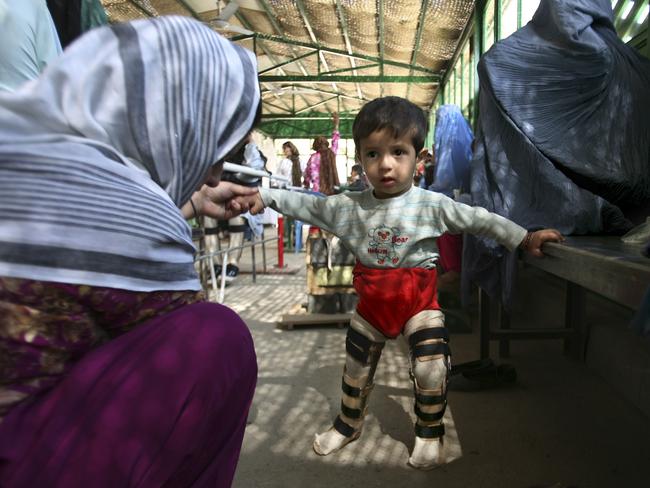Can you catch Ebola on a plane? The deadly diseases that spread via air travel
IT’S one of the world’s deadliest diseases, so it’s little wonder that the thought of Ebola spreading has sparked panic. But it’s far from the only killer ailment you can catch on a plane.

WHEN a man collapsed at a busy international airport in Lagos — Africa’s largest city — fear was struck into the hearts of authorities.
Tests showed the man had one of the world’s deadliest diseases, the flesh-eating Ebola virus. And it was spreading.
The traveller, consultant Patrick Sawyer, later died in hospital, one of approximately 729 people killed by Ebola since it was declared an outbreak earlier this year. There are fears for passengers who may have come into contact with Sawyer at the busy airport and on the plane itself.
But Ebola is far from the only infection that can be spread via air travel.
Here’s what you need to know about your health when taking to the skies.
What diseases can you catch from air travel?
Flying is undoubtably a dirty business. Every year, more than a billion people from the furthest corners of the globe share airports and aircraft.
According to the Oxford Journal of Infectious Diseases: “International travel has made the spread of disease via aeroplanes almost routine. Outbreaks of measles, polio and cholera have been traced back to countries thousands of miles away. Even Ebola previously travelled the globe this way: During an outbreak in Ivory Coast in the 1990s, the virus infected a veterinarian who travelled to Switzerland, where the disease was snuffed out upon arrival and she ultimately survived.”
Dr Deborah Mills, Medical Director of The Travel Doctor in Australia told news.com.au: “The level of filth all around us is amazing, there are simply millions of bacteria and viruses. But we just don’t think about it as we can usually fight them off, unless our immune system is compromised.”
She said anything from the common cold and influenza, to tuberculosis, norovirus and E coli can be caught on a plane.
“One disease of particular concern right now is the Middle East Respiratory syndrome coronavirus, in Saudi Arabia which originated from camels. We just don’t know how bad it could get.”
However, according to the World Health Organisation (WHO) and the US Centers for Disease Control and Prevention, the risk of catching a disease on a plane is similar to that of many public places such as the office, school or shopping centres, where you’re in touch with a lot of people.
How are diseases spread on planes?
Most diseases are spread through close contact or by breathing in the particles or droplets coughed or sneezed out from an infected person. They can also be passed on from touching contaminated surfaces or even eating contaminated food.
Planes are confined environments, and those sitting within two rows of a contagious passenger for more than eight hours are at higher risk of transmission, according to researchers. Aircraft can also transport disease-riddled animals such as rats or malaria-carrying mosquitoes.
So how can you prevent getting sick on plane?
“Firstly, don’t fly if you’re sick. Consider others around you,” Dr Mills said. “If you do fly you may want to consider taking a mask with you, because if the person next to you starts coughing, you’re stuck!
“I’ve had patients who have caught whooping cough on a plane. It happens. So it pays to take precautions. Carry hand sanitiser with you and make sure you wash your hands meticulously after using the toilet and before you eat. Be mindful of the germs that live on the fabric of plane seats and the tray tables. And make sure you get your shots.”
She said travellers who’ve been infected on a flight will usually develop symptoms within the week. Those most at risk include the pregnant, young children and those who have untreated AIDS.
Don’t think it couldn’t happen to you.
“People are incredibly blase about the diseases they can catch either on planes or in the destinations they visit. They think that travel is perfectly safe. They’re used to being in Australia which is clean and safe and has good health infrastructure.
“But people are getting sick all the time, you just don’t hear about it.”

Here are six diseases to be on the lookout for when flying:
1. Swine flu
In 2009, airports and airlines around the world were on high alert when a new strain of the swine flu virus, which originates from pigs, was identified in humans. The virus spread around the world including to Australia, where 186 people died. The global death toll is approximately 250,000.
Swine flu is back with a vengeance in Australia this year, with 4000 cases so far prompting the Department of Health to issue a warning for people to remain on the lookout for symptoms of the virus such as a fever, cough, headache, tiredness and diarrhoea.

2. Middle East Respiratory Syndrome Coronavirus (MERS)
First diagnosed in Saudi Arabia in 2012, the disease was spread to the US by an airline passenger travelling from the capital of Riyadh to London. There’s no vaccine and it has a fatality rate of 30 per cent. However, it can be cured with standard treatments for respiratory infection, if diagnosed early on.
Dromedary camels are suspected to be a source of infection, and transmission from person-to-person has been documented. There have been no cases reported in Australia but the Government is closely monitoring the situation.

3. Meningococcal
Meningococcal is a rare, life-threatening bacterial illness that could damage the bloodstream and lining of the brain. There have been cases of passengers being infected on planes, including a woman who was believed to have come down with the ailment on board a flight from Los Angeles to Sydney in 2003, as detailed in this Government report.
4. Severe acute respiratory syndrome (SARS)
SARS is a serious form of pneumonia caused by a virus which can result in severe breathing difficulties and can be fatal.
According to WHO, 22 people were infected with SARS on an international flight in 2003 — China Air Flight 112 — in a case that shows how air travel is capable of rapidly spreading diseases.
During the SARS outbreak, investigations were conducted among passengers from 40 flights where there were patients on board who had symptomatic SARS. Transmission is thought to have occurred on board 5 of the 40 flights, the Oxford Journal of Infectious Diseases reports.
Overall there have been approximately 800 deaths, but no cases have been reported since 2004 and WHO says the risk of transmission is low.

5. Poliomyelitis (polio)
Polio is very contagious virus that mainly affects young children and can invade the nervous system and cause paralysis. There is no cure.
In May the WHO declared the spread of polio to be an international public health emergency, describing it as an “extraordinary event” which called for ‘a co-ordinated international response’.

6. Tuberculosis
This disease, which mainly affects the lungs, was once the leading cause of death in many countries but is now uncommon in Australia.
According to WHO, the transmission of tuberculosis on board commercial aircraft was reported during the 1980s, but not since then. However, the increasing popularity of air travel and the emergence of drug-resistant TB require continuing vigilance to avoid the spread of infection.



